Worlds of Hungarian Writing
Worlds of Hungarian Writing
National Literature as Intercultural Exchange
Edited by Andrs Kisry, Zsolt Komromy, Zsuzsanna Varga
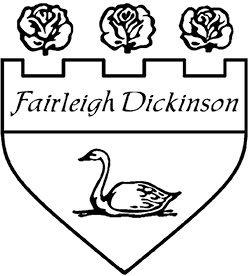
FAIRLEIGH DICKINSON UNIVERSITY PRESS
Madison Teaneck
Published by Fairleigh Dickinson University Press
Copublished by The Rowman & Littlefield Publishing Group, Inc.
4501 Forbes Boulevard, Suite 200, Lanham, Maryland 20706
www.rowman.com
Unit A, Whitacre Mews, 26-34 Stannary Street, London SE11 4AB
Copyright 2016 by Rowman & Littlefield
All rights reserved . No part of this book may be reproduced in any form or by any electronic or mechanical means, including information storage and retrieval systems, without written permission from the publisher, except by a reviewer who may quote passages in a review.
British Library Cataloguing in Publication Information Available
Library of Congress Cataloging-in-Publication Data
Names: Kisry, Andrs, editor. | Komromy, Zsolt, editor. | Varga, Zsuzsanna, editor.
Title: Worlds of Hungarian writing : national literature as intercultural exchange / edited by Andrs Kisry, Zsolt Komromy, and Zsuzsanna Varga.
Description: Madison : Fairleigh Dickinson University Press, 2016. | Includes bibliographical references and index.
Identifiers: LCCN 2016001040 (print) | LCCN 2016011837 (ebook) | ISBN 9781611478402 (cloth : alk. paper) | ISBN 9781611478419 (Electronic)
Subjects: LCSH: Hungarian literatureHistory and criticism. | Literature and societyHungary. | National characteristics, Hungarian. | Hungarian literatureForeign countries.
Classification: LCC PH3019 .W67 2016 (print) | LCC PH3019 (ebook) | DDC 894/.51109dc23
LC record available at http://lccn.loc.gov/2016001040
 The paper used in this publication meets the minimum requirements of American National Standard for Information SciencesPermanence of Paper for Printed Library Materials, ANSI/NISO Z39.48-1992.
The paper used in this publication meets the minimum requirements of American National Standard for Information SciencesPermanence of Paper for Printed Library Materials, ANSI/NISO Z39.48-1992.
Printed in the United States of America
We dedicate this volume to the memory of
John Neubauer
(19332015)
whom some of the contributors to this volume remember as a friend, and whose work remains an inspiration and example for many of us in and beyond Hungary.
Acknowledgments
The idea for this collection originated in two conference panels organized by the Hungarian Discussion Group of the Modern Language Association for the MLAs 2012 Convention held in Seattle. We would like to thank the participants for their contributions, and to thank all those who have since helped us in bringing this project to fruition. We are particularly grateful to Zoltn Mrkus, Adriana Varga, our editor Harry Keyishian at Fairleigh Dickinson Univeristy Press, as well as the anonymous reviewer for the press, whose advice and comments made this book much better.
We would like to thank the University of Chicago Press for granting permission to Lauren Walsh to use copyrighted passages from W. J. T. Mitchells work Picture Theory: Essays on Verbal and Visual Representation ; and Harper Collins Publishers for permission granted to Katalin Orbn to quote copyrighted material from Pter Esterhzys Celestial Harmonies , translated by Judith Sollosy.
Note on Translations
English versions of the titles of Hungarian works in square brackets signal that the work in question has no published English translation; such titles are given in the authors rendering. Parentheses indicate that the title is referred to according to an existing English translation.
Unless otherwise indicated, all translations are provided by the respective chapters author.
Introduction
World Literature in Hungarian Literary Culture
Andrs Kisry and Zsolt Komromy
Hungarian literature, partly because of the myth of its linguistic isolation, has often been seen as evolving according to its own logic, at some distance from other European literatures. Even the most traditional or nationalistic accounts of this culture do recognize, however, the extent to which models taken from other languages and literatures, and the political struggle with foreign cultural models, have consistently defined Hungarian writing, as a tradition repeatedly renewing itself through interactions with (mostly) Western cultures. The importance of translation to the history of national literature, the close ties contemporary Hungarian writers have with European literary culture, and the considerable contribution of migr writers and scholars to Hungarian literature and criticism all indicate that the isolation is indeed a powerful myth deployed in the production of a national tradition. The interactions with other literary cultures are of course registered and discussed in Hungarian literary historiography, of which reception study is an important subfieldbut such scholarship has until recently been controlled and defined by the framework of national literary history. Recent developments in literary culture as well as in scholarship prompt us to consider the ways in which the study of intercultural exchanges can be cut loose from regulative, territorially, and culturally constraining national narratives and turned into an organizing concern of literary historiography. The present collection is a nonsystematic survey of modern Hungarian literary culture as a scene of cultural exchange. While it is inevitably backward-looking, it is informed by the contemporary experience of a world of accelerating human and cultural mobility, of transnational migrations and the challenges they pose to the normative alignment of literary culture with the territorial nation-state as its (wished-for) supporting frameworkan experience Hungarian scholarship and politics have been slow to catch up with. While most of the authors of this volume learned Hungarian as their first language, every one of them has experienced vitam extra Hungariam , many of them now permanently living elsewherethe existential condition of this collection is thus an aspect of the cultural condition it seeks to explore. In what follows, we offer an introductory account of the concerns and developments in its background.
Beyond the now traditional presence of Hungarian authors in German-speaking literary culture, there is a growing interest in Hungarian literature in the Anglophone world as well as elsewhere, and this suggests that far from being an isolated entity, Hungarian writing can resonate closely with the trends and traditions of an increasingly globalized literary marketplace. Hungarian writing did occasionally reach wider international circulation earlier (Mr Jkais novels were something of a popular success in English in the 1890s, and it is characteristic of Ferenc Molnrs success in German-speaking Europe and on the German and English language stages in New York that his years in American exile were recently discussed in a collection of essays about German-language migr writers), but in the past couple of decades, Hungarian participation in the globalizing market of world literature has been increasing in ways that are in turn making a noticeable impact on literary life within Hungary as well.
Given the more continuous presence of Hungarian authors in German translation, the recent change in the Anglophone market is particularly remarkable. Think of the success of such major contemporary writers as Pter Esterhzy, with half a dozen books translated into English to critical acclaim; the Nobel-laureate Imre Kertsz; Pter Ndas, whose two major novels have received serious critical attention and who was thought to have been very near being awarded a Nobel Prize just a few years after Kertsz; or Lszl Krasznahorkai, whose novels Satantango and Seiobo There Below , translated by George Szirtes and Ottilie Mulzet, respectively, won the Best Translated Book Award in the United States in 2013 and 2014, and who was the 2015 recipient of the Man Booker Prize. Examples of a newfound Anglophone interest in Hungarian literature are not restricted to contemporary writers, and could be multiplied. Such interest is hardly the mere effect of a fascination with the exoticrather, it is a function of the globalization of literary production. Contact with other literatures has obviously affected Hungarian writing since its earliest beginnings, first through the countrys participation in medieval Latinity, and since early modernity, through the waves of literary trends, models, and generic innovations that created both world literature as a system and the individual national literatures that constitute it. As one critic has recently suggested, the increasing visibility of Hungarian writers on the international stage is hardly due to contemporary writers being better or to their works being less dependent on cultural determinations, but much rather to an accelerating international cultural transferand the work of individuals participating in this transfer (not just of writers, but of film productions, musicians, or scientists) is judged increasingly by global, rather than by local, standards. Like the writers of other, nonhegemonic or minor literary cultures, Hungarian authors enter the twenty-first-century neoliberal marketplace of world literature because Hungarian writing has been shaped by its participation in an accelerating exchange with other literary cultures throughout its history.
Next page


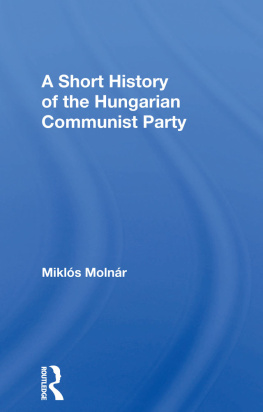

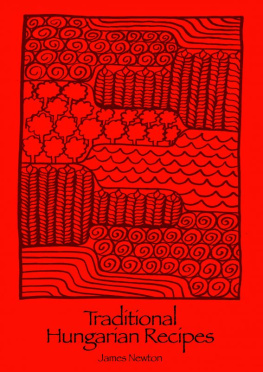

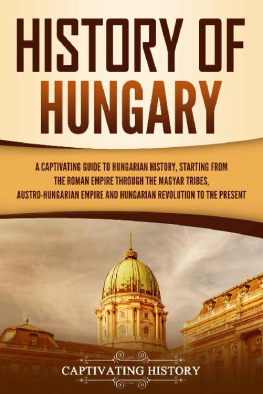

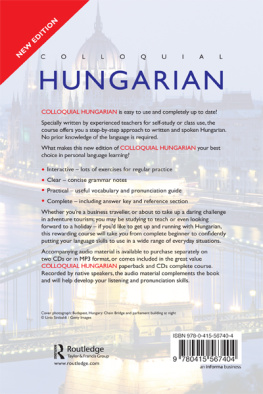
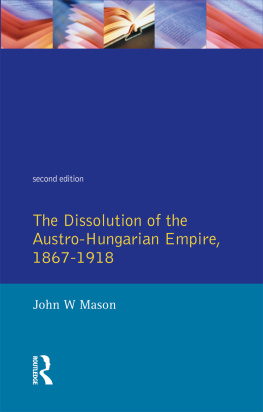
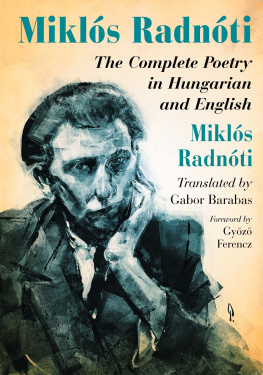
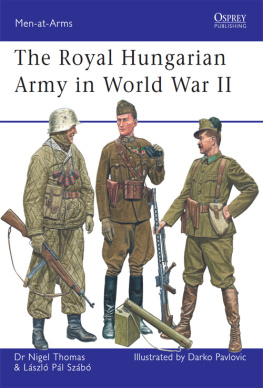

 The paper used in this publication meets the minimum requirements of American National Standard for Information SciencesPermanence of Paper for Printed Library Materials, ANSI/NISO Z39.48-1992.
The paper used in this publication meets the minimum requirements of American National Standard for Information SciencesPermanence of Paper for Printed Library Materials, ANSI/NISO Z39.48-1992.